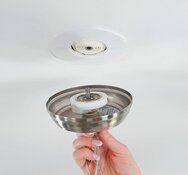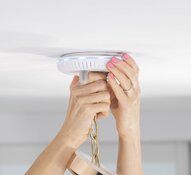Red Cat Holdings Inc. (RCAT:NASDAQ), a drone technology company specializing in integrating robotic hardware and software for diverse operational needs, announced it has passed electronic warfare (EW) testing in Ukraine with Doodle Labs, which makes industrial-strength wireless networking solutions for robotic systems.
The announcement comes at nearly the same time that the United States passed a military aid package to Ukraine worth US$60 billion. It also revealed a US$6 billion long-term military aid package for the war-torn country that will allow the U.S. to purchase new equipment produced by the American defense industry for the Ukrainian military.
"This is the largest security assistance package that we've committed to date. It will include critical interceptors for Ukraine's patriot and NASAMS air defense systems, more counter-drone systems and support equipment, significant amounts of artillery ammunition, and air-to-ground munitions and maintenance and sustainment support," U.S. Defense Secretary Lloyd Austin said Friday, according to CNN.
The U.S. Army has already selected Red Cat as a finalist for its Short Range Reconnaissance (SRR) program, for which the company is developing a small unmanned aircraft system (SUAS) prototype for delivery in May 2024. The winner, to be announced by September 2024, will be awarded a contract for the delivery of about 12,000 drones.
All of the attention to the issue pushed RCAT's stock up last month from US$0.95 per share on April 15 to a high of US$1.65 on April 30, with the company seeing its highest trading volumes so far this year.
"The reason for the strong gains in Red Cat stock this month is that the latest . . . massive cash infusion for Israel and Ukraine, etc., has of course, been passed by the House with some of this being earmarked for the purchase of drones for use by the military," wrote Technical Analyst Clive Maund on April 25. "Apparently, this time, Red Cat is a strong contender that may be favored over competitor Skydio, especially after what was said about Skydio in a recent Wall Street Journal article. Hence the sharp rise in Red Cat's stock this month."
The newspaper quoted Skydio Chief Executive Adam Bry as saying their drone system was "not a very successful platform on the front lines" in Ukraine.
"If (Red Cat) does prevail, we can expect the stock to spike in the same manner that it has in the past," Maund noted.
Getting Systems Out of a Jam
The biggest challenge to Ukrainian forces' use of drones at scale has been Russian jamming of the signals that control them. Red Cat subsidiary Teal's unmanned Teal 2 system equipped with Doodle Labs' frequency-hopping radios can evade those attempts, the company said in a release.
"The main objective of every one of our partnerships is to increase the survivability and lethality of the warfighter — and our work with Doodle Labs is no exception," said George Matus, Red Cat's chief technical officer. "Requirements for operation in EW environments are changing rapidly as sUAS become an integral part of modern warfare. The U.S. and its allies require a capability that prevents their systems from being jammed during critical missions, and this successful EW test is a major step forward for Teal in meeting these requirements."
"If (Red Cat) does prevail, we can expect the stock to spike in the same manner that it has in the past," Technical Analyst Clive Maund noted.
Red Cat President and Chief Executive Officer Jeff Thompson told Streetwise Reports that many of the racing drones being used by the Ukrainian military don't fly back after they are sent out to hit targets, and some last "only seven to 10 minutes."
"We can fly 35-plus minutes," Thompson said of Red Cat's products. "And then, with the swarms, we can replace batteries and stay up online," bringing drones in and out of formation indefinitely.
"The war in Ukraine has demonstrated the real-world need for low-cost, U.S.-made drones that can be deployed rapidly at scale and withstand enemy jamming attempts," said Amol Parikh, co-chief executive officer of Doodle Labs. "Drone communication and jamming is a continuous game of cat and mouse that requires constant innovation. Our Mesh Rider radio is proven to evade the most highly sophisticated jamming attempts at long distances, and we're highly encouraged by the successful integration and EW testing with Red Cat and Teal."
Red Cat's integration of Doodle Labs' Helix Mesh Rider Radio adds to its string of partnerships within the industry. Other partners include Sentien Robotics, Ocean Power Technologies, Primordial Labs, Tomahawk Robotics, Athena AI, Teledyne FLIR, Reveal Technology, and Immervision.
Company on a 'Growth Trajectory'
Maund started following the company in June of last year. In his April 25 post, he noted that the stock is "a very attractive speculative play here that could net huge gains in a short space of time."
The company posted its best quarter in Q3 fiscal year 2024 (FY24), which ended January 31, exceeding guidance by 16% and generating record revenue.
"Red Cat is on a growth trajectory," Dr. Ashok Kumar, an analyst at ThinkEquity, wrote in a research report.
For Q3 FY24, the third consecutive quarter of double-digit, sequential growth, revenue was US$5.8 million. This reflects increases of 250% year over year and 49% quarter over quarter.
"Red Cat is on a growth trajectory," Dr. Ashok Kumar, an analyst at ThinkEquity, wrote in a research report.
At the quarter's end, Red Cat had a total cash and accounts receivable balance of US$12 million and a funded order backlog valued at US$5.1 million.
Subsequent to Q3 FY24, in February, the sale of Red Cat's consumer segment to Unusual Machines Inc. (UMAC:NYSE) closed. From this, Red Cat received 4.25 million Unusual Machines shares, US$1 million in cash, and a US$2 million note payable to it.
Kumar has assigned a Buy rating and a US$5 per share target price to the stock.
"We forecast total revenues to grow from US$9.9 million in fiscal 2023 to US$35.0 million in fiscal 2025. Over the same period, we expect operating income to improve from US$27 million to US$9 million," Kumar wrote.
The Catalyst: Deterrence
The Teal 2 drone was developed to "Dominate the Night." It is outfitted with ultra-high-resolution thermal imaging and is modular, rugged, secure, and easy to fly. Military, public safety, and government entities use the Teal 2 for intelligence, surveillance, and reconnaissance.
"Bringing the Teal 2 drone to market was a significant milestone and the first drone to focus on nighttime operations," Thompson said.
"We believe that our gross margins with any purchase of one of these software solutions could be approximately 65%-plus and if the above customer chooses two or more software features mentioned above, we believe could approach 85% gross margins," purported Thompson.
Another revenue opportunity for Red Cat is the Pentagon's Replicator initiative. The U.S. Department of Defense's goal, Thompson said, is to get thousands of low-cost, autonomous drones to the warfighter in 18−24 months and has allotted a US$1 billion budget for this.
"The core objective is largely to counter China's growing military strength by overwhelming adversaries with what might be considered more expendable drones," according to a March article on The Drone Girl.
Thompson said such deterrence will be a big factor in drone sales worldwide going forward.
"Having such incredible technology that no one wants to go to war with you is the way we're going to prevent wars," he said. "That means significant budgets across the entire globe, not just the United States."
The global military drone market is projected to reach US$17.96 billion in value by 2033, up from US$10.93 billion in 2023, according to a GlobalData January 2024 report. This reflects a total increase of 64% or a compound annual growth rate of 5.1%.
In addition to the U.S. drone programs, the Ukrainian government recently announced that it is increasing its spending on drones by an additional US$392 million, or 15.5 billion hryvnia, the national currency of Ukraine.
 Streetwise Ownership Overview*
Streetwise Ownership Overview*
Red Cat Holdings Inc. (RCAT:NASDAQ)
"With the funds allocated today, 300,000 drones will be delivered to our security and defense forces," Prime Minister Denys Shmyhal said at a Cabinet meeting in Kiev, according to a report by DPA International.
Shmyhal said Ukraine had previously budgeted 43.3 billion hryvnia for the purchase of drones this year.
Ownership and Share Structure
According to Red Cat, 37.27% of the stock is held by management and insiders. Reuters notes that CEO Thompson owns 16.5%, CEO of Fat Shark RC Vision Systems Gregory Ralph French has 6.48%, COO Allan Thomas Evans has 1.81%, and Director Nicholas Liuzza has 1.31%.
Institutional investors have 9.01%. The Vanguard Group Inc. has 1.75%, and Pelion Venture Partners has 1.21%, Reuters reported.
The rest is in retail.
The company's market cap is US$81.42 million, and its 52-week trading range is US$53−1.65 per share.
| Want to be the first to know about interesting Technology investment ideas? Sign up to receive the FREE Streetwise Reports' newsletter. | Subscribe |
Important Disclosures:
- As of the date of this article, officers and/or employees of Streetwise Reports LLC (including members of their household) own securities of Red Cat Holdings Inc.
- Steve Sobek wrote this article for Streetwise Reports LLC and provides services to Streetwise Reports as an employee.
- This article does not constitute investment advice and is not a solicitation for any investment. Streetwise Reports does not render general or specific investment advice and the information on Streetwise Reports should not be considered a recommendation to buy or sell any security. Each reader is encouraged to consult with his or her personal financial adviser and perform their own comprehensive investment research. By opening this page, each reader accepts and agrees to Streetwise Reports' terms of use and full legal disclaimer. Streetwise Reports does not endorse or recommend the business, products, services or securities of any company.
For additional disclosures, please click here.




































